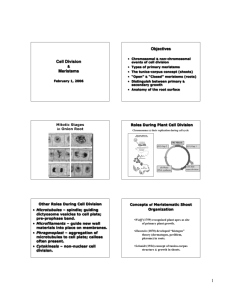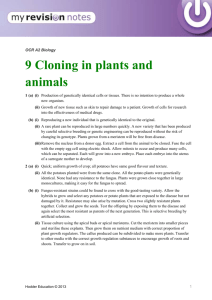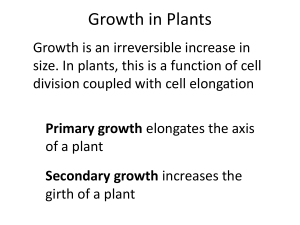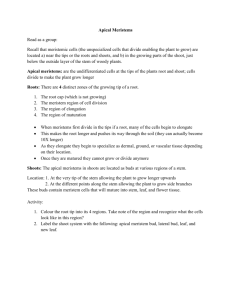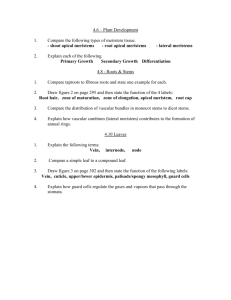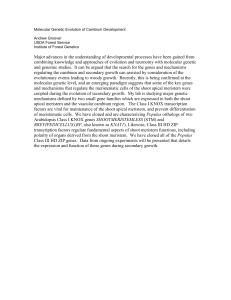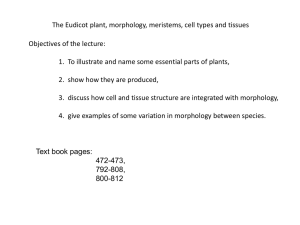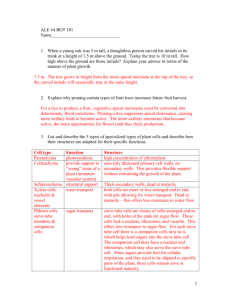BIOL 321 Lecture 7_Sample Questions
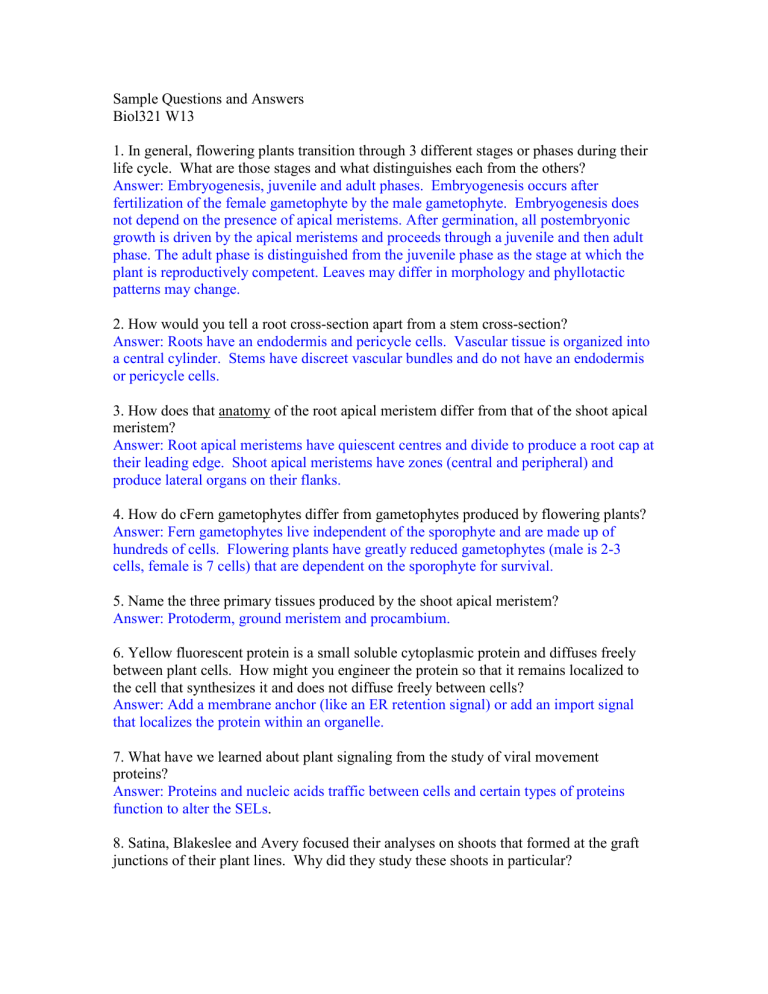
Sample Questions and Answers
Biol321 W13
1. In general, flowering plants transition through 3 different stages or phases during their life cycle. What are those stages and what distinguishes each from the others?
Answer: Embryogenesis, juvenile and adult phases. Embryogenesis occurs after fertilization of the female gametophyte by the male gametophyte. Embryogenesis does not depend on the presence of apical meristems. After germination, all postembryonic growth is driven by the apical meristems and proceeds through a juvenile and then adult phase. The adult phase is distinguished from the juvenile phase as the stage at which the plant is reproductively competent. Leaves may differ in morphology and phyllotactic patterns may change.
2. How would you tell a root cross-section apart from a stem cross-section?
Answer: Roots have an endodermis and pericycle cells. Vascular tissue is organized into a central cylinder. Stems have discreet vascular bundles and do not have an endodermis or pericycle cells.
3. How does that anatomy of the root apical meristem differ from that of the shoot apical meristem?
Answer: Root apical meristems have quiescent centres and divide to produce a root cap at their leading edge. Shoot apical meristems have zones (central and peripheral) and produce lateral organs on their flanks.
4. How do cFern gametophytes differ from gametophytes produced by flowering plants?
Answer: Fern gametophytes live independent of the sporophyte and are made up of hundreds of cells. Flowering plants have greatly reduced gametophytes (male is 2-3 cells, female is 7 cells) that are dependent on the sporophyte for survival.
5. Name the three primary tissues produced by the shoot apical meristem?
Answer: Protoderm, ground meristem and procambium.
6. Yellow fluorescent protein is a small soluble cytoplasmic protein and diffuses freely between plant cells. How might you engineer the protein so that it remains localized to the cell that synthesizes it and does not diffuse freely between cells?
Answer: Add a membrane anchor (like an ER retention signal) or add an import signal that localizes the protein within an organelle.
7. What have we learned about plant signaling from the study of viral movement proteins?
Answer: Proteins and nucleic acids traffic between cells and certain types of proteins function to alter the SELs .
8. Satina, Blakeslee and Avery focused their analyses on shoots that formed at the graft junctions of their plant lines. Why did they study these shoots in particular?
Answer: Shoots formed at graft junctions can be chimeric and made up of a mix of cells from both graft partners. In some instances cells organize into stable periclinal chimeras while in others they organize into unstable sectorial chimeras.
9. What are plasmodesmata? What role do they play in plant development?
Plasmodesmata connect the symplasm of the plant. They are gap-like junctions that breach the cell wall. They have a cytoplasmic sleeve that is lined by the plasma membrane and a central membrane called a desmotubule that connects the endoplasmic recticulum of adjoining cells. Plasmodesmata allow for the passive and regulated exchange of molecules between adjoining cells thereby allowing regulation of cellular and tissue signaling events during growth and development.
10. Name three cell automonous markers that can be used to study lineage relationships in plants.
Pigments
Nuclear ploidy
Epidermal hairs (trichomes)
3xGFP or ER anchored GFP

